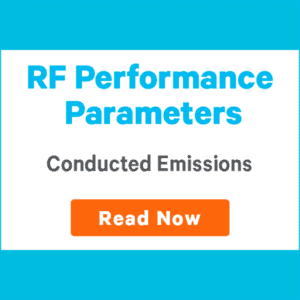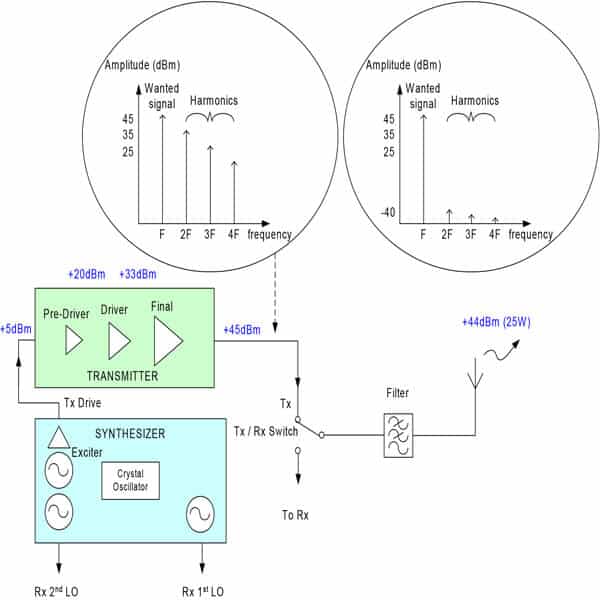 The Conducted Emissions performance of a transmitter is basically the ratio in dB of how far down any unwanted outputs are with respect to the wanted signal at the antenna connector.
The Conducted Emissions performance of a transmitter is basically the ratio in dB of how far down any unwanted outputs are with respect to the wanted signal at the antenna connector.
As we have seen previously, unwanted frequencies can be present on the output of the transmitter for a number of reasons. Noise on DC Power supplies is one reason, but by far the most common and strongest unwanted products are the harmonics produced by the Transmitter itself. Harmonics are simply integer multiples of the wanted frequency, and are produced because the transmitter is driven into a non-linear mode.
The most common specification for Conducted Emissions is found in the European ETS300-086 standard. Here, it is specified that any unwanted transmitter outputs shall be <-36dBm in level up to a frequency of 1GHz and <-30dBm in level from 1GHz – 12.75GHz.
Typically, because the Final stage of the transmitter is driven into it’s non-linear region, the level of the harmonics as its output may only be as little as 10dB down on the wanted signal. In the case of a Mobile radio, where the wanted output is at a level of +45dBm, this means the harmonics may be as high as +35dBm.
The role of the following low pass filter is to attenuate these harmonics such that, at the antenna, they are at a level lower than that required to meet the ETS300-086 limit. This is illustrated below:

Figure 18: Illustration of Transmitter Conducted Emissions
Note: Conducted Emissions performance of <-36dBm is typical of all Tait Portables, Mobiles and Base-Stations, although those designed purely for the USA market may only meet the lower FCC limit of <-20dBm.
Conducted Emissions is not to be confused with a similar sounding parameter, Radiated Emissions. To measure radiated emissions, the transmitter is terminated in a 50 Ohm load and the power leaking from the radio’s housing is measured by means of directional antennae.



